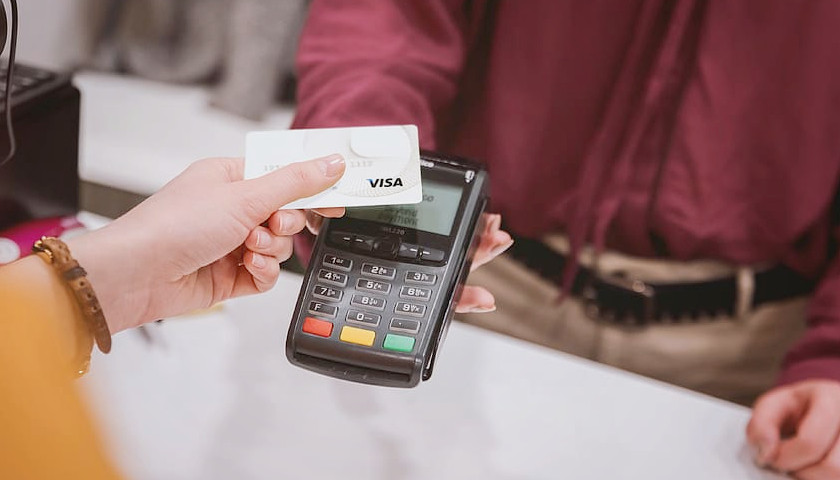by Bethany Blankley
As inflation rose last year to a 40-year high, Americans’ credit card debt also soared, according to analyses published by the personal-finance website WalletHub.
In its Credit Card Debt study, Wallethub found that consumers racked up $87.3 billion in new debt in 2021. During the fourth quarter of 2021, debt increased by $74.1 billion, the largest increase ever reported, Wallethub notes. It was also a 63% larger increase than the post-Great Recession average for a fourth quarter.
By the end of 2021, the average household credit card balance was $8,590. “That’s $2,642 below WalletHub’s projected breaking point,” the report states.
By the beginning of 2022, nearly 47% of consumers’ credit card spending habits were back to pre-pandemic levels, the analysis found.
According to Wallethub’s quarterly credit card survey, 33 million Americans say they’ll have more credit card debt by the end of 2022. However, 37% say they’d be willing to do anything to be debt-free, according to the report.
In its Fed Rate Hike report, Wallethub found that the Federal Reserve’s 0.25% interest rate increase on March 16 will cost those with credit card debt roughly $1.6 billion in extra finance charges during 2022.
Approximately 88% of those surveyed said they’re concerned about inflation; 55% said the fed rate hike is bad for their personal finances, according to another Wallethub survey on interest rates.
“People are having trouble making ends meet as is, and they know rising rates will only increase the cost of their debt,” Jill Gonzalez, WalletHub analyst, said in a statement accompanying the survey findings. “Every 25 basis points the Fed increases its target rate will cost people with credit card debt approximately $1.6 billion annually.”
One key area where consumers can expect to pay more because of inflation and increased interest rates is in the average APR on a 48-month new car loan. Wallethub expects this to increase by roughly 16 basis points in the months following the Fed’s recent rate hike. By comparison, it notes, the average APR on a 48-month new car loan rose from 4% in November 2015 to 5.5% in February 2019. “That’s a 150-basis point increase in a period characterized by 225 basis points in Fed rate hikes,” it points out.
“The average APR among credit card accounts accruing finance charges is already over 16%, which is significantly higher than the rates charged for secured debt like mortgages and auto loans,” Gonzalez said. “With credit card rates set to rise after the Federal Reserve takes action, people will see the cost of their credit card debt increase.”
Despite the record-high debt of Americans, roughly 25% surveyed said it was difficult to get into credit card debt during COVID-19 lockdowns for several reasons. Federal stimulus checks padded Americans’ bank accounts, restrictions and safety concerns led to more staycations and less eating out, and daily commuting costs went to nearly zero, according to the survey results.
However, that’s changed now that aspects of society have opened back up. Americans “have been piling on new debt at increased rates lately,” Gonzalez said.
In addition to the $87 billion in new debt Americans added in 2021, WalletHub estimates an increase of more than $100 billion in 2022.
To help consumers with credit card debt and managing their finances, Wallethub posted a list of tips online. They include creating a budget and sticking to it, building an emergency fund taking actions to improve credit.
– – –
Bethany Blankley is a regular contributor to The Center Square.




